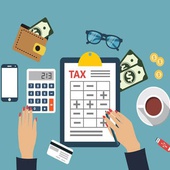Value added tax
Value Added Tax (VAT), often referred to as "Goods and Services Tax" or "Consumption Tax" in different countries, is an indirect tax that suppliers of products and services are required to pay. The primary aim of this tax is to ensure a balanced national budget and to motivate businesses to enhance the quality and value of their offerings throughout the production and distribution processes.
As of 2025, Vietnam's Value Added Tax is determined based on the value added at each stage of the supply chain, spanning from manufacturing to distribution and final consumption. This tax typically applies to nearly all goods and services within the Vietnamese domestic market, with specific exemptions for items designated for social purposes, including those related to agriculture, education, healthcare, insurance, humanitarian aid, scientific research, minerals, national defense, and telecommunications.
There are three primary VAT rates that businesses must adhere to, depending on the category of products and services offered:
1 - A 0% VAT rate is primarily applicable to exported goods, software exports, and services provided to foreigners in Vietnam, including construction services for foreign projects.
2 - A 5% VAT rate applies to commonly consumed goods and services, including machinery, chemicals, computers and components, construction services, food and beverages, fertilizers, medical supplies, toys, and both forestry and agricultural products.
3 - A 10% VAT rate is imposed on high-value goods and services, such as gold trading, automobiles, oil, electrical devices, construction and installation services, telecommunications, tourism, air and water transport, household appliances, and accounting services.











